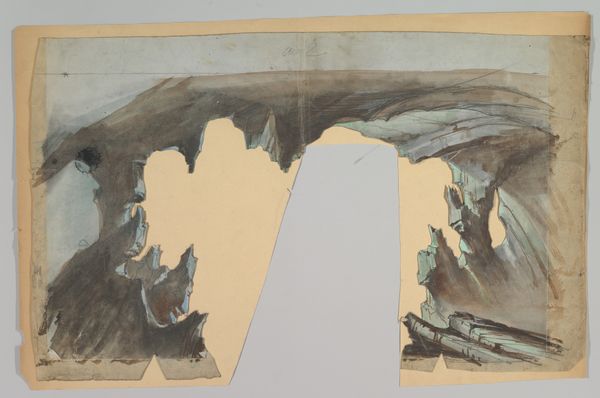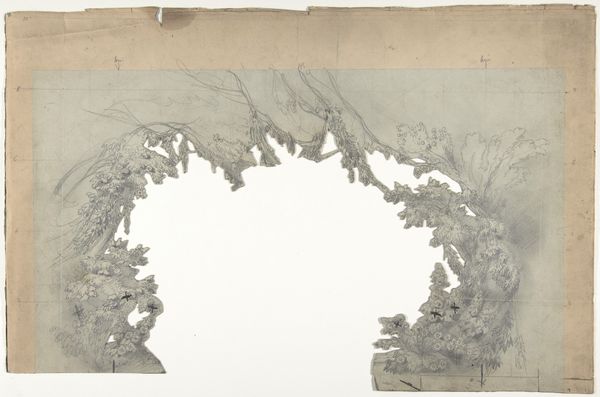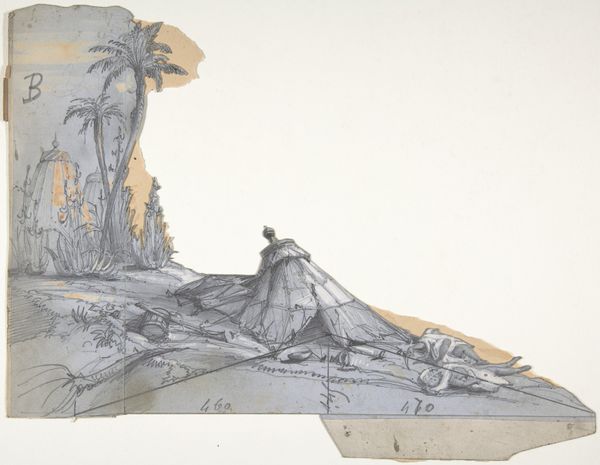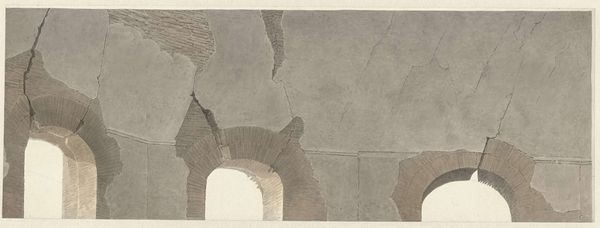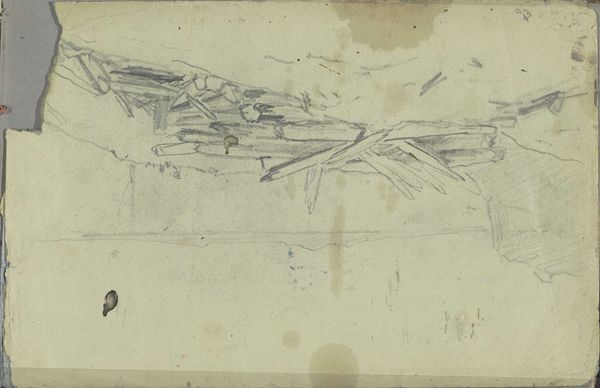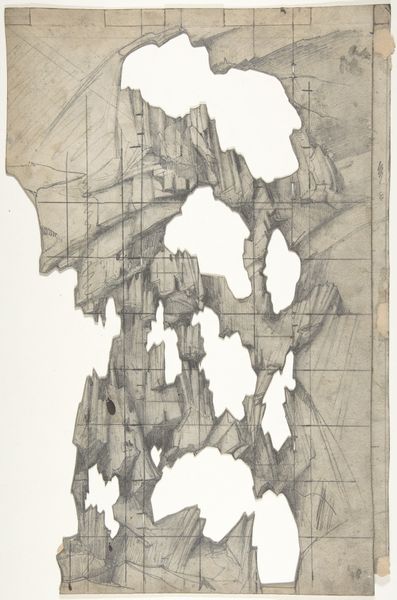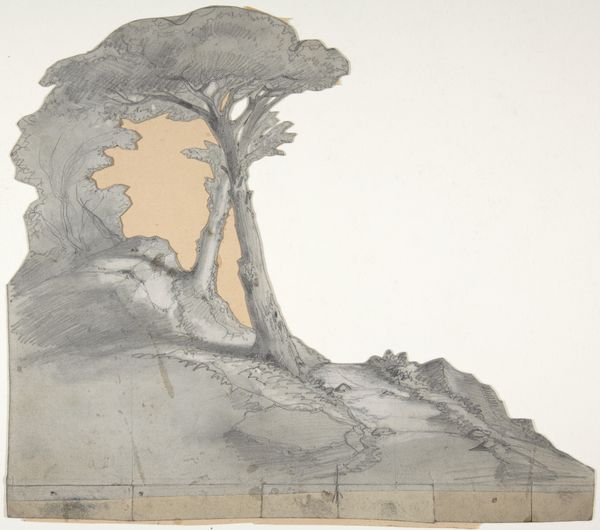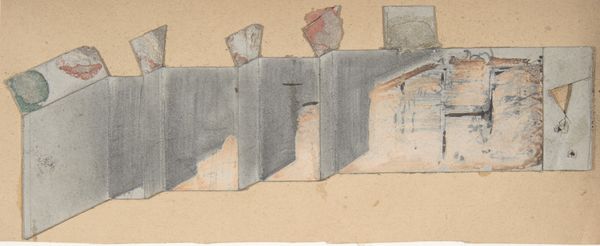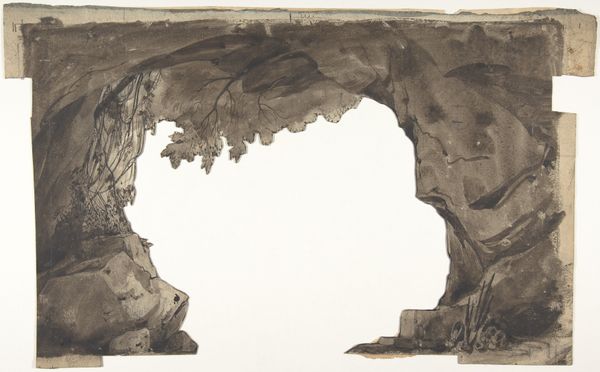
Copyright: Public Domain
Eugène Cicéri made this stage set design with graphite and gray wash, likely sometime in the mid-19th century. This was a period when Parisian theaters staged grand operas and spectacular plays, and Cicéri was one of the most sought-after designers. But, the artwork is interesting not only for its aesthetic value. It offers us a glimpse into the world of 19th-century theatrical production. In this period, Parisian theaters were major cultural institutions, and stage designers like Cicéri played a key role in shaping the visual experience of theatergoers. This design allows us to investigate the social conditions that shaped artistic production in 19th-century Paris. It also encourages us to reflect on the role of institutions like the theater in shaping cultural values and beliefs. By studying designs like this one, alongside production records, critical reviews, and other historical sources, we can gain a deeper understanding of the complex relationship between art, culture, and society.
Comments
No comments
Be the first to comment and join the conversation on the ultimate creative platform.

